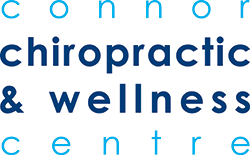Shoulder Pain: Don’t Let It Limit You
Shoulder pain is an overly common injury affecting up to 25% of the adult population at any one time. A common issue with shoulder pain is that we use our shoulders every, single, day! There aren’t many activities that don’t involve the upper body. Because of this, it’s important to address shoulder injuries as they pop up rather than allowing them to linger. Not only can shoulder injuries limit your day to day activities, there is a certain population that is also at risk of Frozen Shoulder (adhesive capsulitis). This can happen when the injury is left untreated and daily movement is decreased.
What Does Shoulder Pain Feel Like?
There are a variety of structures and different tissue types in the shoulder. Because of this the symptoms and aggravating factors can vary. In addition to different structures, there are also a number of different ways to injure the shoulder. This includes overuse injuries, falls and accidents and sports injuries. The overall symptoms experienced are typically determined by a combination of which tissues are involved and the mechanism of injury.
Some examples of what shoulder pain can feel like:
- Sharp or Dull
- Achy (with or without pain at night)
- Pinching or Catching
- Throbbing
In addition to the different sensations of pain, the location can also vary. The pain can be centered directly over the shoulder joint, in the surrounding muscles or even down into the arm. Some of the muscles of the shoulder produce pain lower into the arm which is called referred pain. Referred pain is due to the fact that both the injured tissue and the structures lower down the arm share the same nerve supply.
Why Seek Treatment for a Shoulder Injury?
Seeking treatment is important for multiple reasons. Firstly to help decrease your pain or symptoms and get you back to doing the things you love. Secondly, many shoulder injuries don’t heal on their own. This is because you continue to aggravate them day to day. And lastly, determining which structures are causing the pain can be extremely beneficial. By having a diagnosis and an idea of what is causing your pain it can help determine next steps if they are required.
Why Avoiding All Activity Isn’t The Best Option:
Like with most injuries, some activity modification may be required with shoulder pain. Thankfully completely stopping activity isn’t typically the best option. Continuing to move and use your shoulder is key to avoiding Frozen Shoulder. While pain isn’t a great feeling, there are many times some mild pain is actually necessary to a quicker recovery. Lastly, with activity, once you stop it’s harder to get started again. It’s a combination of these three factors that guides treating shoulder injuries. By working with a professional you can determine what pain is bad pain and what pain is productive. As well it can help you determine which activities you can continue to perform and those that may need to be modified. Working with someone to help keep you active. Which may help you progress towards full recovery and avoid any additional issues post injury.
Unfortunately shoulder injuries are extremely variable. Sometimes they require some trial and error when treating. Each treatment aims to decrease pain and symptoms. In addition, it is also is great insight into what may be causing your pain. While imaging is not required in many injuries, an ultrasound may be indicated if:
- Your symptoms are severe
- The injury doesn’t respond to treatment the way we would expect
- Your injury isn’t recovering at the speed expected
- The injury is due to a fall or sports injury
As with most things to do with the body, the answer to many questions is, it depends. Having a health care professional on your team can be a key factor to recovery. They can help decrease pain, increase function and support you towards full recovery.


